On behalf of Miguel and myself, I want to say a huge thank you to all of you for supporting the mission we were able to be a part this past month. Most importantly, I want to thank you all for your prayers throughout our journey – there were so many times when I praised God for having His hand to lead us and protect us during our journey, and I am certain that is due to all the prayerful support we received!
I would like to give you a summary/reflection of the work we did and provide a glimpse into the lives of some of the children and families that we were able to support through your donations. I know this is going to end up being a quite extensive account of our journey, so if you can only read part of it – I ask that you read the section about Aduvina!
The Journey Begins
Our journey began back in September when I was talking with one of my WIC preceptors about my interest in international nutrition and development work. A Peace Corps alumnae herself, she was able to put me in contact with another dietitian who was very involved in the field of international work and who had started her own non-profit in El Salvador, El Cuenco, with the focus of nutrition, education, health, medical, and economic development projects. After a few conversations, it was decided that Miguel and I would accompany Peg (founder of El Cuenco), Jeff (her husband), Ruth (80-year old seasoned international dietitian), and Charles (Ruth’s husband and educational assistant) on their upcoming mission trip to El Salvador. Peg gave us the freedom to choose what area we would like to invest our efforts, and I decided it would be best to put to practice my nutrition skills and plan various nutrition charlas (small presentations) for the communities with which we’d be working.
I started out by writing a small grant in attempts to receive funding for the programs we’d be putting on. Some of the topics we planned to present on included the basic nutrition concepts (diversifying the diet, eating on a budget), personal and food hygiene, infant nutrition, and malnutrition and disease prevention/treatment. Although we were not able to receive grant funding with such short of time, Peg informed us that a donor would match any money that Miguel and I raised, which could be used for various projects and families throughout our time there.
Work in the Field
Originally, our plan was to spend about half of our time doing work in the city of San Salvador and half of our time staying out in the campo (countryside) in the rural town of San Carlos Lempa. Unfortunately, the situation in El Salvador at this time is not the best and so for security reasons, we ended up focusing more of our work around the city and took a day trip out to the campo. Ruth and her husband, Chuck, have given nutrition charlas in over 25 countries around the world, so it was a huge blessing to watch and assist in some of their classes, as well as lead some of our own. Ruth’s presentations focused on basic nutrition and hygiene practices, using a variety of puppets and visuals for the people to learn from. She and Chuck also led a class on how to make solar cookers out of a cardboard box and aluminum foil. We were able to do presentations with the nutrition students at the University of El Salvador, Cesar’s Fundación (after school development program), La Soya (a soy bakery founded by a Mary Knoll Lay Missioner), in the rural community of San Carlos Lempa, and with Convoy of Hope.
Miguel and I also led a cooking class at the University in which we experimented with making various types of mantequilla de soya (soy butter), and we talked to the students about differences in food habits between the US and El Salvador. We warned the students of what can happen when a society is overrun by fast food and convenience foods (which you can see is in the early stages of happening there) and encouraged them to continue to pass along the knowledge and love for cooking to younger generations. It is interesting to go to a developing country and see the start of the food revolution – the transformation from 3 home-cooked meals a day to quick, greasy, processed foods on the go. Just as in the US, poverty and obesity often go hand in hand. When you only have $1 to spend on food and you can get cheap junk food that is high in fat and sugar and will keep your stomach full for longer than fruits and vegetables, that is often what is chosen. We also had the opportunity to be on a national radio program twice, talking about nutrition, culture, and the arts, and donated suitcases of medical supplies to two different hospitals.
One of the highlights of our time there was our trip out to the campo (San Carlos Lempa) to distribute aid to the community. San Carlos Lempa is a poor, rural community along the Rio Lempa in the state of San Vincente. Peg has had a relationship with the families of this community for almost 20 years and has worked to bring food and other resources to the families in need. This is where the majority of our donations of clothes, tools, shoes, kitchen supplies, etc. went. Prior to embarking on this trip, I was a bit hesitant about bringing so many donations, as I’ve learned about the importance of going about aid distribution in a way that is not just a “hand out” which can lead to learned dependency or even worse, negatively impact a local economy. However, Peg assured me they had a system in place for distribution and that any donations would be greatly appreciated by the families.
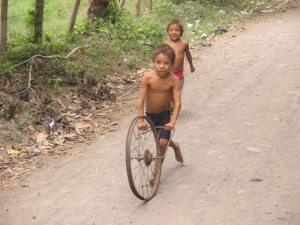 After arriving in the community, some of the community leaders began to distribute the donations in small bags for each family. Each family also received a sack of beans and rice and a fruit tree which we were able to get donated from the agronomy department of the University of El Salvador. After playing with the kids and helping with the distribution, we hopped in the bed of a pick-up and traveled out to visit with some of the families. This was perhaps the most eye-opening experience for Miguel and myself, to see the conditions and small shacks of sheet metal over dirt floors that families of nine and ten kids were living in. Peg informed us of the families who were in most need and allowed us to choose if we wanted to use any of the money we raised to make a donation to each of these families. While the faces of the children beamed on the outside, many were covered from head to toe in dirt and you could clearly see muscle wasting and signs of malnutrition.
After arriving in the community, some of the community leaders began to distribute the donations in small bags for each family. Each family also received a sack of beans and rice and a fruit tree which we were able to get donated from the agronomy department of the University of El Salvador. After playing with the kids and helping with the distribution, we hopped in the bed of a pick-up and traveled out to visit with some of the families. This was perhaps the most eye-opening experience for Miguel and myself, to see the conditions and small shacks of sheet metal over dirt floors that families of nine and ten kids were living in. Peg informed us of the families who were in most need and allowed us to choose if we wanted to use any of the money we raised to make a donation to each of these families. While the faces of the children beamed on the outside, many were covered from head to toe in dirt and you could clearly see muscle wasting and signs of malnutrition.
Aduvina
One girl, Aduvina, particularly grabbed my attention. She was at the town center helping with the food distribution and had the most gorgeous smile that radiated through her eyes. She had a humble, gentle presence about her. I could tell she was trying to gain the courage to talk to me, so I went over to her and she graciously thanked us for coming to help her community. As we traveled to visit some of the families most in need, I learned that she was the oldest of seven, the only girl. Peg told me that her family is one of the poorest in the community, and that it has been challenging to bring them aid, because her dad is an alcoholic and will spend any money donated at the bar or even sell any clothes or food donations to be used for drinking money. Peg said what they try to do now is sneak small amounts of money to the mother that she can use to buy provisions for the family.
Peg was able to talk to Aduvina during our time there, and she said she had just finished her high school education and had interest in going to the University, but it was much more of a dream that any conceivable reality. As I reflected on her situation, I knew that this was the case that I felt called to support with a large portion of our donation money. What I’ve learned over and over in developing countries is that education really is a key to break the cycle of poverty. As I reflected on Aduvina’s situation, I knew that if she does not get this opportunity to go to the University, she will likely become pregnant soon and forced to stay with a man who will support her and her child, as she continues to have more children. And thus continues the cycle that I’ve witnessed in poverty-stricken areas. Young girls become pregnant, perhaps even multiple times during their teen years and are at the mercy of the man who impregnated them, as they are the only chance to support the mouths of their children. Perhaps after a few years this man will abandon the mom and her children, and the mom is forced to look for another man who can support their family. Of course, this then results in more children, more children that are barely getting enough calories to survive as the family grows in numbers. Without a good school system and activities to keep the kids occupied, it is likely for young boys to end up in gangs, and girls to become pregnant at a young age, thus continuing the cycle.
As I continued to notice Aduvina’s youth, innocence, humility, and beauty, in stark contrast with her dark and challenging environment, there was this spark in her that I wanted to preserve. I know many immigrant families and have seen how the education or fleeing to the US of even just one child who is able to attain a decent job can change the future of their family. Thus, I told Peg that she could use the rest of the donation money to go toward a scholarship for Aduvina to be able to attend the University. The challenge now is to continue to find the funds to make this dream a reality. For Aduvina to attend a university, she would likely have to enroll in a private university (as the public one is EXTREMELY hard to get in to), which I would estimate to cost around $100/month. There also are typically enrollment fees, supply fees, etc. In addition, she will need to be able to find transportation to and from school every day (it is common for students to travel up to 3 hours each way in bus just to get to the university for classes – dorms do not exist). If there is no university close enough to where she is living, she may need to find an apartment closer to the university where she can stay. That being said, it could be a costly endeavor. However, El Cuenco currently supports numerous kids via scholarships and I know that it is possible to make this dream a reality.
For those of you who contributed to the El Cuenco raffle, I want you to know that part of the money raised will be going toward Aduvina’s college scholarship and to greatly thank you for this support! I also ask that you keep Aduvina in your prayers. I know that many people set aside a certain amount of money for charitable donations throughout the year, and I would like to offer you the opportunity to make Aduvina one of the deserving people that you support. One thing I learned about development work is that situations are constantly changing. You cannot go into it thinking things will go as planned, because they most certainly will not. I’m sure that the situation with Aduvina will be changing as well over the coming months and years – one cannot assure that the journey to get Aduvina into a university will be easy nor successful, but I think it is most definitely worth a shot.
Please pray and consider contributing to this fund and let me know if you have any question at all. Another crucial aspect of aid work is relationships and prayer. Compassion International really hits the nail on the head when it comes to this. That is why when Miguel and I had the chance to visit the child my family sponsors in Nicaragua, it was one of the most moving experiences. It wasn’t just that we had donated money to Dylan, but we have been writing letters for 3 years now back and forth, getting to know his family, his interests, his prayer intentions. We have been praying for him at our family dinners for 3 years as well, connecting us on a spiritual level. For those of you who feel called to support Aduvina, I would love to give you the opportunity to connect with her through writing letters, through prayer, and even through visiting her one day if you’re up for the adventure! There are many great causes to support in the world, so I only ask if you feel called to support this one, please let me know and we can talk logistics of donations (all tax deductable through El Cuenco and anything helps :))!
Growing Violence
Another learning experience during our trip was dealing with the growing gang violence and making day to day decisions about our safety. A little history about the current situation in El Salvador: El Salvador is home to two of the most violent gangs in the world, the MS – 13 and the Barrio 18. The Salvadorian Defense Minister reported that 500,000-600,000 of the 6 million residents of El Salvador is estimated to be involved with gangs. While El Salvador has always been known to be a more dangerous country, the violence has really started to peak in the past few months. This past June, there were 677 reported murders (about 22/day). To give you a little perspective of the size of El Salvador, the state of Missouri is over 8 times the size of El Salvador (8,124 mi2 v. 69,704 mi2). The local news stated it is now becoming more violent than even during their Civil War in the 80s and 90s. During the height of the Civil War, there were about 17 killed per day.
In prior trips to the country, I had stayed in a slightly more sheltered environment and was working with a larger non-profit lead by a team of locals who are familiar with the conflicts and areas to avoid. Basically, I was able to put my confidence in their judgment of what was safe or not safe to do. Entering this trip with a smaller grassroots non-profit, led by a couple from the U.S. put more responsibility in my hands to make sure that I was well-informed on the situation of violence throughout the country in order to decide which activities were “safer” to partake in or even perhaps if it was time to leave the country. During our stay there, we kept up with the news and saw as things unfolded – one day, the police were given the executive order to shoot any gang member they spot on the streets, and another day we read about the government receiving funding from other nations to help in combating the violence. Upon returning, I have kept in contact with one of the girls who I met and she has been updating me on how things have been unfolding. She expressed her fears for her family’s safety, stating that the gangs had now taken control of the public transportation system, killing at least 8 bus drivers and threatening any driver that they would be killed if they continued their route. Additionally, she stated that a national curfew had been set in place, requiring all to be off the streets by 5 PM. I share this information to give a glimpse at the harsh reality of violence that many people in the world are surrounded by. We are very blessed to live in a place where we can walk around our neighborhood at night, call the police and know that you can trust them and that they are going to come help you if you are in trouble, and where we do not have to deal with a constant fear and anxiety of whether our children will return home safe at night. I ask that you keep this country and these people in your prayers, but also that you pray for peace in the world in general, because this situation is not unique. To combat these sad injustices, it requires more than just political or social change, but rather a change that starts in the hearts of each individual. I have no doubt that by coming to find that peace in our own hearts, it can cause a ripple effect that spreads throughout the world.
The Compound v. The Castle
Now, as I described earlier, due to safety concerns, we ended up staying in a small hotel in San Salvador in a relatively safe area, as opposed to spending half our nights out in the “campo” in an area with higher rates of violence. For the 6 of us Americans, by the second week, you could tell we were all getting a little stir crazy. We are used to the style of travel where you are constantly on the go, with little down time. Although we had activities (classes, hospital visits, etc.) planned every day, we still were left with a good deal of down time in the hotel. Staying with us at the hotel were three of the kids (young adults) that El Cuenco sponsors through scholarships. Because they were on break from classes at the time, it allowed them time to connect with Peg and Jeff, and experience a true “vacation,” swimming in the pool, watching TV, and doing things that they otherwise would not have the opportunity to do. Near the end of the trip, Peg made an interesting observation which really struck me. She stated her reflection of how for us Americans, we felt like we were in some type of compound, going stir-crazy. At the same time, for these kids, the hotel was like a castle, a safe fortress where they could walk around freely without fear of what could happen to them and just relax. In learning their backgrounds and growing in relationship with these friends, I learned that God places opportunities in front of us all day long – it is our responsibility to recognize them. God was giving Miguel and I the opportunity to build a strong relationship with these kids – to both learn from them and to encourage them in their journey.
I would like to share a little about 2 of these friends to give you a glimpse into the lives of many Salvadorian children (names changed to respect their privacy).
Maria
Maria is a beautiful and brilliant 19-year old girl currently working on her nursing degree. As I grew in relationship with Maria throughout our two weeks there, I did not know much background on her situation. In talking with Peg during our second week there, she told me that they met Maria at Cesar’s Fundación de Niños, an after-school enrichment program for kids and a place which assists families in paying for school fees and other expenses they may have. Peg told me that the first time she visited La Fundación, the director wanted to bring her and Jeff to see some of the places where the kids were living. Peg says that when they arrived to Maria’s house, she thought they were just stopping to take a rest – she did not realize that what she was looking at was their home. El Cuenco proceeded to raise funds to purchase a house for Maria’s family. They were given the liberty to search for a place that suited them with the funding raised. Unfortunately, shortly after moving into their new place, they found out that their neighbors across the alleyway were highly involved in gang activity, and they even told Maria’s mom that they would probably be passing through their yard to do their work. What scares me more than anything is the fact that Maria, her mom, grandmother, and sister, all women, live alone in this house surrounded by gang activity. The sad part is, that as Peg and I discussed our anxieties about being in the country and going out to do work during this challenging time, Maria stated that she understood – that both her and her mom suffer from anxiety. That many times they cannot sleep because of the fears they have – that they often wake up due to loud noises at night, never knowing if they will be safe until the morning. It really humbled me to think that here I am so centered around my own safety concerns for these 2 weeks, while there are people across the globe who live with these fears day after day.
Carlos
The next story I would like to share is that of Carlos. I learned that Carlos was a “street kid” who Peg came across about 10 years ago and has been supporting ever since. Our last night in the country, Carlos had the opportunity to connect with Miguel and share some of his story, which still brings me to tears thinking about. Carlos was abandoned by his parents at 5 years old and literally grew up on the streets – running from place to place, begging for money (think about the movie Slumdog Millionaire, which we actually watched one night with Carlos). Peg told us that the first time she met Carlos she was taking another family that El Cuenco supports out for ice cream. She decided to buy a soda from a nearby soda machine, when a boy around the age of 10, covered in dirt and with glue all down the front of his clothes, came up to her and handed her a small piece of paper with something typed in English asking for money. Peg told us that usually kids who do this are hired by some type of “pimp” (as they likely would not be able to type up something of that sort on their own), who sends the kids out to beg for money, then typically sexually and mentally abuses and the kids as well. Another major issue with street kids is sniffing glue. Whether it is a habit learned from friends or a type of drug given by the “pimp” to control the kids and assure they return, it is extremely addicting and leads to large amounts of brain damage.
Peg was moved by seeing this boy. He was around the same age as one of the kids in the family they were with, and so she invited him to go back to the hotel to get cleaned up. Upon learning that he had been living on the streets, she bought him a few things to help him get through the night and asked him to come back the following day so that she could try to get him more help. What Miguel learned was that when Carlos left that night, he was beaten on the street and all of his stuff was stolen. He was so afraid to come back to Peg and for her to find out what happened, that he decided not to return until a few days later. When he did return, Peg was able to connect him with Hermana Claudia, a nun who runs an organization that houses and helps kids to get off the streets and back into school. Since that day, Carlos has been enrolled in classes and has been one of Peg and Jeff’s “adopted” kids. Miguel described to us his conversation with Carlos and how over and over he stated how he just could not understand why it was that he was given this second chance at life or how it was that someone would take them into their family as if he was their own son. I cannot help but think how this parallels God’s relationship with us. Each one of us has our own struggles in this life, and I’m sure many of us have come to the point where we reflect on our humanity and our sinfulness and think that we are just too “messed up” or a “hopeless case.” Yet at the same time, it is in these moments that God is standing there waiting for us to accept his invitation to take us into his family, to clean us up, and to pour an undeserved, unconditional love on us. How beautiful is that!
The True Meaning of El Salvador
I realized that throughout our trip, I had been talking so much to others and those back home about “El Salvador”. It was near the end of the trip that I realized I had been overlooking something very important – what “El Salvador” truly represents (or translates to): “The Savior”, that is, Christ! As I was going about my day throwing this word around, I realized I often failed to recognize the deeper meaning of this word and even at times the deeper meaning of my work.
When I began planning for the trip back in September, I soon became anxious about planning the nutrition classes and the work we would be doing. I was so concentrated on being prepared and what I needed to get done, that I failed to put everything in the hands of God and Jesus Christ, El Salvador del Mundo. The same happened during my time at the hotel, or what we saw as our “compound.” At first, we were frustrated and focused on the fact that we could not leave and explore more, but then I realized that God was telling me that I was right where He wanted me to be – to learn and grow with those right in front of me – Maria, Carlos, Ruth, Chuck, Peg, Jeff, and Miguel. Maybe in our life, in times when we don’t understand where we are, what we are doing, or if our work really has purpose or meaning, maybe it is in those times that God is calling us to open our eyes to see what is around us – the people we encounter each day. For God has a task for all of us, we just have to take the time to look around and see the opportunity in front of us.
In the end, despite the “struggles,” I am extremely grateful for the experience that we had in El Salvador, for the relationships we made, and the lessons that God taught us. I am very impressed by the work El Cuenco is doing and for the humility that Peg and Jeff have in giving all credit to God, to whom all credit is due.
A Few Thoughts on Development Work
The idea of “development” work has always been an interest of mine. I love studying and working with various organizations and non-profits to see how they go about bringing aid to people and places in need. Throughout the past few years, I have been reflecting and journaling on ideas of what I think aid is really about or what is the best way to go about it. I have always even been a little turned away by the word itself of “development” work. It makes me feel like we are trying to take a society or culture and “develop” it into something like the US Don’t get me wrong, I feel SO blessed to live in the US, a “developed” nation with the freedom, security, and opportunities that we have. At the same time, it is important to see that no nation is perfect. For example, you walk through a US suburban neighborhood and probably will see very few people out talking with their neighbors, running around, helping each other out. We do have the “developments” of ACs, TV, and video games, but at what cost? We now have kids who rarely play outside alongside rising rates of obesity. In stark contrast, in most neighborhoods in Central America, you will always see people out on the street and kids running around playing games. Someone is always cooking a meal to share with neighbors and family, and if someone is in need, their neighbors are there to help. Therefore, I think a better question to ask is what are we developing? Are we simply trying to develop an infrastructure similar to the US? You can already see the influence of the “first world” in the growing number of fast food restaurants, or the intriguing sight of kids living in communities without clean water who are walking around checking facebook on their smartphones.
What I learned from this trip is that the goal should not be to “develop” a 3rd world country into a 1st world country or to simply bring resources, technology, and material goods to an impoverished area. While this may be part of it, in my mind, the main goal should be to achieve a greater sense of peace, love, and health (in all senses of the word). If I go into “development” work what I would like to focus on is developing minds and developing infrastructures that support mental, physical, spiritual, emotional, and environmental health. To develop relationships not only with our brothers and sisters, but also to foster relationships with our Creator. To show others that we each have a purpose. To selflessly love others, putting their needs above our own.
“Blessed are the Poor, for Theirs is the Kingdom of God”
Sometimes I step back and look at myself and my “struggles.” I picture myself sitting on my bed surrounded by my Bible and Catechism and study books, trying to understand the faith at a deeper level. And then I see these people here living on the streets, covered in dirt, with mangled joints, torn and ragged clothes, and a look of despair and hunger in their eyes. Some are sifting through trash cans for food, while others are lying on the ground trying to sleep. I think to myself, do any of these people have the slightest idea what a Catechism even is? Does the fact that they probably haven’t been to church in years, or maybe never in their lives, affect how “holy” or “virtuous” they are? I ask myself, if I had their life, and was suffering from all sorts of pain, disease, and hunger, without a place to neither sleep nor shower, would I be able to wake up day after day and keep living? I must admit, I think it would be darn hard. Truly, I must think, that to these is the Kingdom of God. I have no doubt that they will be first in line to heaven, and I think deservedly so. I may not understand yet fully the nature of suffering, but I do believe these people are angels in a sense, here to challenge others in their journey, to teach others what it truly means to love and suffer like Christ.
I hope you enjoyed these reflections – I often feel unworthy to write about a lot of these things, as I know that these are merely my own thoughts, perspectives, and reflections on what I have witnessed, coming from the perspective of a 24 year-old American girl who grew up in a beautiful, yet sheltered environment in middle class suburbia. I know that there is much to be learned through life experience, that there are many intricacies and sufferings of this world that I do not yet understand or have not yet experienced yet. I know that many people could explain these situations better or after having personally lived through them, would come out with different perspectives, and I hope to understand these better one day. But, ultimately, my goal is to:
- Reflect on my own the things I have seen/experienced.
- Share with others some of the harsh realities that people experience every day to not only educate, but also hopefully move some to action, advocacy, and prayer.
- Express the beauty that exists in all places.
- Grow in faith and give glory to God through everything!
If you are interested in further reading on the current situation in El Salvador, here are a few articles just published this past week:
- Ending the cycle of gang violence in El Salvador: http://www.bbc.com/news/world-latin-america-33750162
- Worse than war: El Salvador’s youth caught in web of violence: http://thehill.com/blogs/congress-blog/foreign-policy/249969-worse-than-war-el-salvadors-youth-caught-in-web-of
I also HIGHLY recommend this book about finding God’s love amidst some of the roughest areas of gang violence: Tattoos on the Heart, by Father Gregory Boyle.
Please continue to pray for peace in the world, for peace in our communities, and for peace in our own hearts!
Que Dios les bendiga,
Lisa
P.S. And this was only the first two weeks of our adventure 🙂

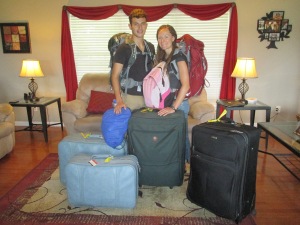
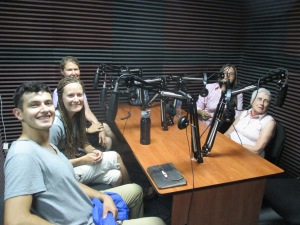
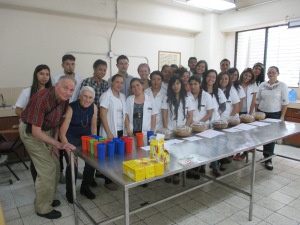
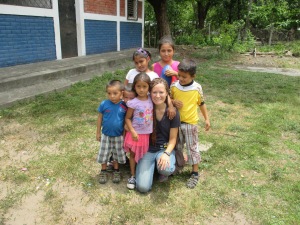
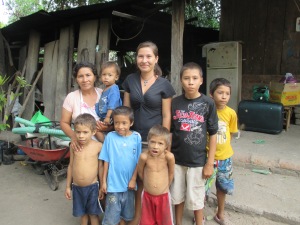
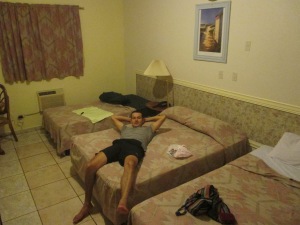
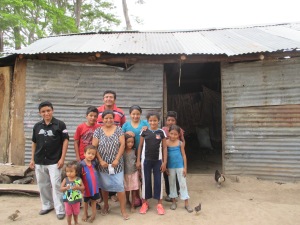
Lisa I love reading about what you and Miguel are doing to serve God
Thank you, Mrs. Brawley!